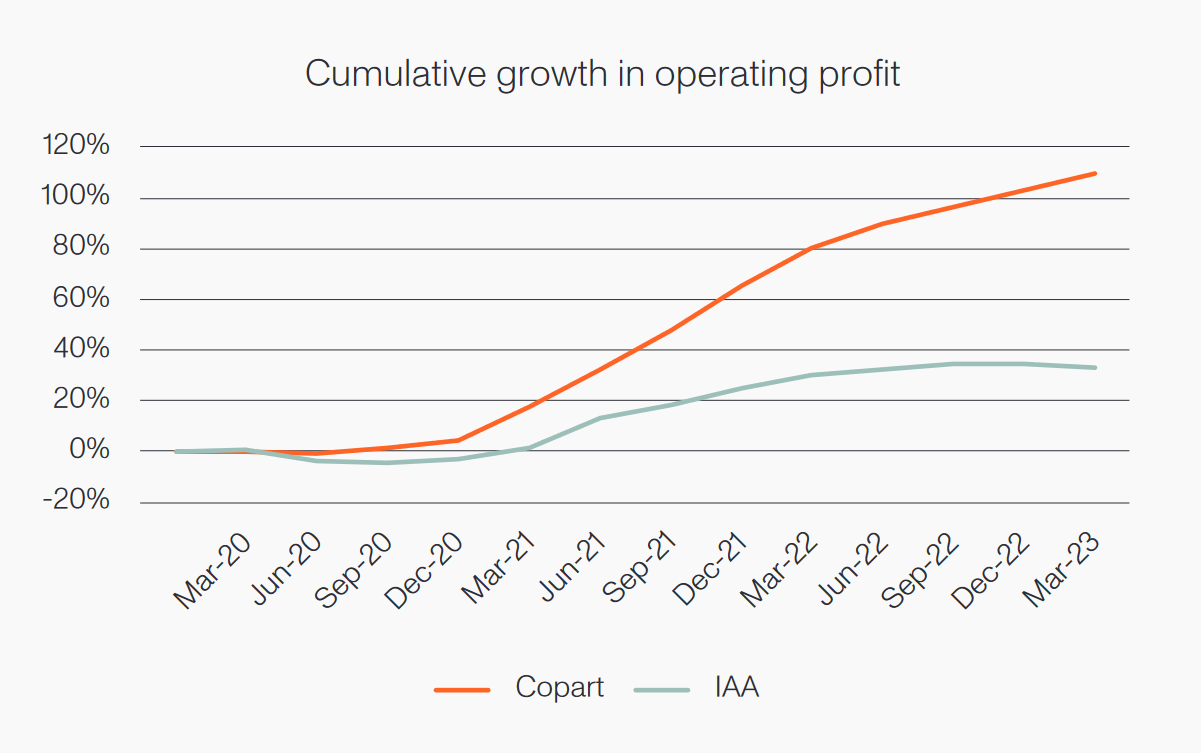Why settle for second best?
In a favourable economic environment, businesses that are the leaders in their industry may appear to be of similar quality and risk to the #2 or #3 player. But during times of stress, the attributes that separate the best businesses from their next-best peers start to become more apparent, and the differences in their financial performance can be stark.
Attributes that separate the best businesses from the rest
-
Size
Competitively winning businesses are often the largest in their industries. They can distribute their fixed costs over a larger base of revenue, leaving them with more profits to reinvest and reinforce their size and strength. They are also in a privileged position relative to their smaller peers in negotiating with suppliers and attracting and retaining talent.
-
Breadth
The best businesses serve a broad range of end markets and customers, such that weakness in any one area doesn’t bring down the whole business. Their breadth makes them more resilient than their close peers, whose narrowness may introduce fragility that isn’t apparent until it’s too late.
-
Culture and management mindset
Companies with the #1 position in their market, who have outgrown their competitors over many years, have often achieved that position through a culture of long-term thinking. In a fearful environment, when many companies pull back on their investments to protect near-term profits, a longer-term mindset from the best businesses can pay off enormously in the ensuing years.
Company case study - Copart
A great example is Copart, which is the world’s largest operator of salvaged vehicle auctions. When insurers need to write off a damaged car Copart helps them sell it, typically to a salvage buyer who scraps it for parts, or to a buyer in an emerging country who can repair it cheaply.
This is a market where size is a natural advantage. Copart is 70% larger than its main competitor IAA, which makes its marketplace more attractive to both buyers (who have more cars to choose from) and insurers (who can sell their damaged cars faster and for a better price).
Copart’s culture and management also exhibit unusually long-term thinking. For instance:
- Copart moved from in-person to online auctions over 30 years ago, which is more convenient for domestic buyers and makes its auctions accessible to international buyers. IAA was still heavily reliant on in-person auctions when the pandemic hit.
- There are currently about 300,000 vehicles listed on Copart’s website, which need to be stored in its salvage yards until they’re sold. Since its founding Copart has placed great importance on owning the land for its salvage yards, whereas IAA has chosen to lease most of its land with the risk that landlords increase its rent or repurpose the site.
- Copart has operated with very little debt for most of its history, allowing it to continue investing in land, while IAA has persistently high debt levels.
Due to its size and control of its real estate, Copart earns double the profit margin of IAA. And in the last three years, Copart has cumulatively grown its profit by 3x as much as IAA.

Learnings from the last three years
The last three years have been a valuable test of management and business quality. Companies had to contend with the pandemic, supply chain disruptions, labour shortages and inflation, among other challenges.
At Aoris we look for market-leading businesses with deep-rooted competitive advantages, which become even more visible during tough conditions. We have been impressed by the extent to which our portfolio companies have continued to outgrow not just their end markets but also their strongest competitor, in this tough environment. We expect the same outcome through whatever challenges may lie ahead.
On our website you can find out more about Copart and the other 14 exceptional businesses that we own.
2 topics
12 stocks mentioned

